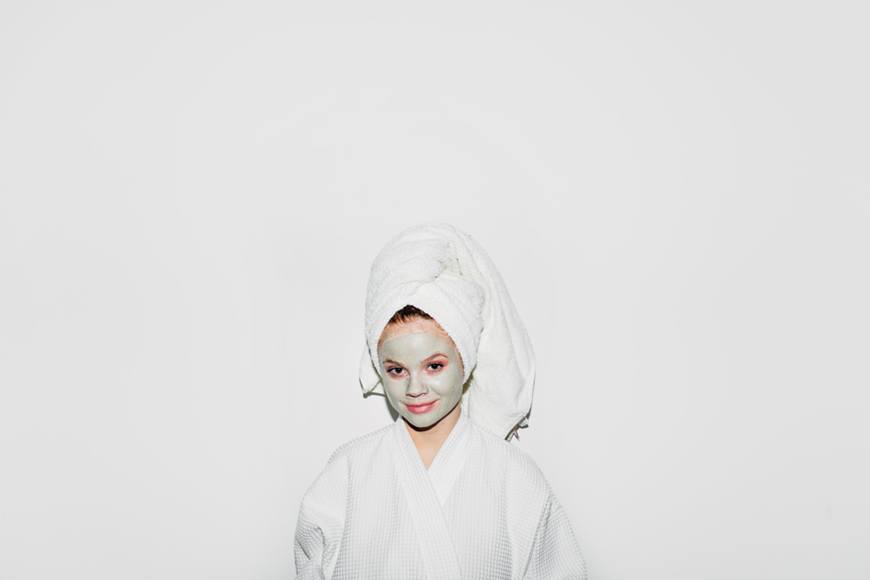The Beginner’s Guide to Hormonal Acne—and How to Deal With Your Newfound Nemesis
What's worse is these particular zits don't tend to respond as well to your typical topical acne treatments. Pimple patches? Nope. Salicylic acid? Sometimes it helps. But there's so much more to treating this sort of acne—the hormonal kind—than meets the eye.
"Hormones are the cause of almost all acne no matter what age you are," says Gary Goldfaden, MD, a Miami-based dermatologist with a namesake skin-care brand. "The hormones we're talking about are primarily progesterone and estrogen, but you also have to consider cortisol, AKA the stress hormone. The interaction of these three are usually the cause behind the acne." Call it the triple threat.
It's such a nebulous term though—hormonal acne—because, as Dr. Goldfaden points out, "It's used when we're talking about women out of their twenties who are starting to see skin issues due to a change in hormones." Thankfully, though, there are plenty of ways to tackle these kind of breakouts, and all of that information is right this way.

{{post.sponsorText}}
Keep reading for the down-low on all things related to hormonal breakouts.

How to spot hormonal acne, and zap it
Acne doesn't discriminate. It'll show up on all four zones of your face, your chest, your back, and even your butt (yes, it can happen). But the pesky, adult hormonal acne tends to stay in one area: the lower part of your face.
"In hormonal acne, we classically see it on the chin and jawline, and occasionally the sides of the cheek and down your neck," says Dr. Goldfaden. "These are typically nodular, tender, deep, and painful types of pimples that occur around the same time each month." He notes that this timing fluctuates from person to person, but the location is the same each time.
Besides how the zits look, what's going on in your life is also a factor, says Dr. Goldfaden. "If you're experiencing something major or traumatic stress, that activates cortisol that basically perpetuates the hormonal problem," he explains.
It sounds overwhelming to try and regulate your hormones, but birth control and de-stressing methods can help.
It sounds overwhelming to try and regulate your hormones, but birth control and de-stressing methods can help. "You can regulate cortisol by trying relaxation techniques," says Dr. Goldfaden. "The other two hormones are difficult to regulate by yourself, but either birth control or the removal of birth control pills can help, it just depends on the individual." Blood tests are typically necessary in order to figure out what's best for the person.

The topical fix
The most important thing for your skin when dealing with this other unwanted monthly visitor is to keep your face clean. "That's the number one priority," Dr. Goldfaden says, adding that keeping oil under control is important considering women tend to produce more oil when menstruating.
Because of this, he recommends exfoliation. "I prefer mechanical, like a scrub or microdermabrasion, but nothing's wrong with a glycolic acid or salicylic acid wash," he says. "Just keep the pores open and get excess oil off of the skin." To avoid flare-ups, Dr. Goldfaden also recommends avoiding anything oily and oil-based—whether it's a sunscreen, moisturizer, or serum.
"Just keep the pores open and get excess oil off of the skin."
After cleansing, it's key to keep your skin's pH under control, notes Joanna Czech, a Dallas-based facialist and skin guru, who likes to begin by toning the face. "After dabbing the toner via a cotton pad all over your face and neck, apply a few drops of the Biologique Recherché Serum Complex Iribiol—which is made with iris and zinc extracts—to the breakout area. It's great for cystic acne and breakouts." Other options for the toner and then serum include Marie Veronique and Kristina Holey's Balancing Hypotonic and Pai's Perfect Balance Blemish Serum Copaiba & Zinc, respectively.
For spot treatment, Czech recommends Protective Nourishment's Pumpkin Peel. "The natural ingredients pull impurities from the skin to clear your complexion," she says. You could also opt for sulfur-rich Goldfaden M.D.'s Facial Detox Purifying Mask, which can be used as a spot treatment overnight. And to keep things moisturized—but not oily—use a purifying cream to reduce redness.
Of course, no get-clear plan is complete without mask action. Czech recommends a using a rich mask with a pinch of baking soda two to three times a week to "purify, balance, and brighten the skin." You could also try Tata Harper's Clarifying Mask to rid your skin of built-up toxins.

Try an anti-hormonal acne diet
Unsurprisingly, we are what we eat. Czech says it's key to pay special attention to foods that are known to act as anti-inflammatories. "Eat a balanced diet filled with fresh seasonal fruits and vegetables, fish, nuts, and healthy oils," she says, adding that other ingredients that are could potentially help your cause include coconut oil, avocado, omega-3 fats, dark chocolate, pumpkin seeds, Brazil nuts, and carrots.
Eliminating certain acne triggers, like dairy and sugars, can also help, says Dr. Goldfaden, adding that in general, a well balanced, healthy diet is better than a restrictive one. Phew.
Here's your guide to *all* the different pimple types and how to treat them. And this is how to read your face to decipher the root cause of your breakout.
Loading More Posts...